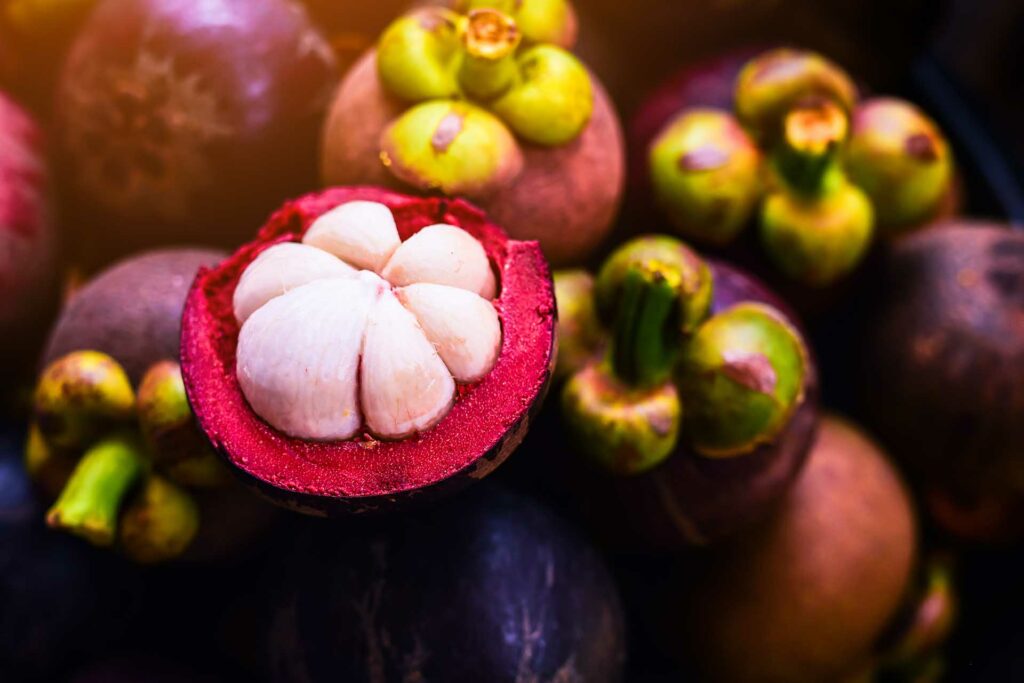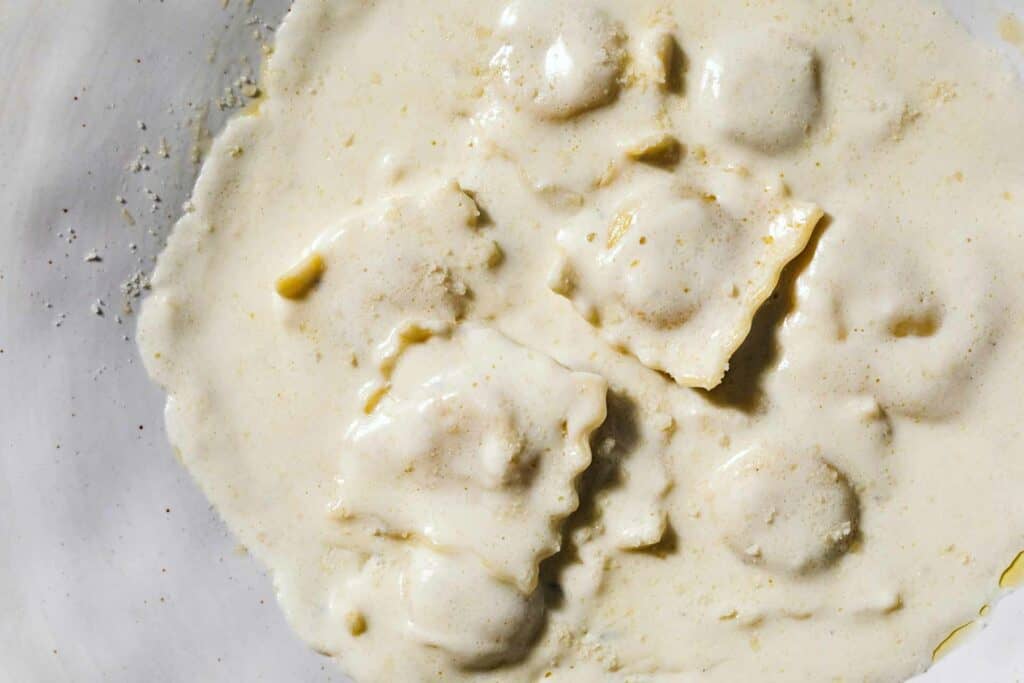To truly appreciate the quest for Brie cheese substitutes, it is essential to understand the allure and popularity of this exquisite cheese. Brie cheese, often referred to as the “Queen of Cheeses,” is a soft-ripened cheese that originated in the 8th century in the Brie region of France. With its velvety, edible white rind and creamy, buttery interior, Brie cheese has become synonymous with indulgence and sophistication.
The flavor profile of Brie cheese is complex, offering a combination of earthy, nutty, and slightly tangy notes. It pairs beautifully with a variety of accompaniments, such as fresh fruits, crusty bread, and even champagne. From cheese boards to gourmet sandwiches, Brie cheese has found its way into a myriad of culinary creations, making it a beloved ingredient among chefs and food enthusiasts worldwide.
Brie cheese’s popularity can be attributed to its versatility. Its luxurious texture and mild yet distinctive flavor make it suitable for both savory and sweet dishes. When served at room temperature, Brie cheese becomes delightfully creamy, allowing it to spread effortlessly on bread or crackers. Its ability to melt beautifully makes it a perfect addition to warm sandwiches, quiches, and omelets. Moreover, Brie cheese can be baked, creating a delectable gooey center that is often accompanied by fruits, nuts, or preserves.
Over the years, Brie cheese has gained a reputation as a staple in cheese boards and charcuterie platters. Its presence adds a touch of elegance and sophistication, making any gathering or celebration more memorable. Its versatility in pairing with various wines, from crisp whites to robust reds, further enhances its appeal in social settings.
As the demand for gourmet and artisanal cheeses continues to grow, so does the popularity of Brie cheese. Cheesemakers around the world have embraced the art of crafting Brie-style cheeses, creating unique variations that cater to different palates. From traditional French Brie to artisanal American and European interpretations, the love for Brie cheese extends beyond its country of origin.
In the next sections, we will explore the need for substitutes for Brie cheese and delve into a vast array of alternatives that can satisfy the cravings of Brie cheese enthusiasts. Whether you are looking for soft and creamy alternatives or vegan and non-dairy options, this comprehensive guide will help you discover substitutes that can elevate your culinary creations and provide a delightful experience reminiscent of Brie cheese. So, let us embark on this journey and uncover the world of Brie cheese substitutes that await us.
Understanding the Need for Substitutes
While Brie cheese holds a special place in the hearts of many, there are several reasons why individuals may seek alternatives. One primary factor is dietary restrictions and allergies. Some individuals may be lactose intolerant, have dairy allergies, or follow a vegan lifestyle, necessitating the exploration of non-dairy substitutes.
For those with lactose intolerance or dairy allergies, consuming Brie cheese can lead to digestive discomfort or allergic reactions. Lactose intolerance is the inability to digest lactose, which is the sugar found in milk and dairy products. Brie cheese, like other dairy products, contains lactose. However, some individuals may find that they can tolerate Brie cheese in small quantities due to its lower lactose content compared to other cheeses.
On the other hand, individuals with dairy allergies experience adverse immune responses to the proteins found in dairy products, including Brie cheese. This can manifest as symptoms such as hives, swelling, digestive issues, or even severe allergic reactions. In such cases, finding suitable alternatives becomes crucial to enjoy the flavors and culinary experiences associated with Brie cheese without compromising one’s health.
Moreover, an increasing number of people are adopting a vegan lifestyle, which excludes all animal-derived products from their diet. For vegans, finding non-dairy alternatives to Brie cheese allows them to explore the realm of plant-based options while still enjoying the creamy and indulgent qualities that Brie cheese offers.
Apart from dietary restrictions and allergies, availability and cost can also play a role in the search for Brie cheese substitutes. While Brie cheese is widely available in many regions, it may not be easily accessible in certain areas or specialty stores. Additionally, the cost of Brie cheese can vary, making it a less affordable option for some individuals. Exploring substitutes allows for flexibility and creativity in culinary endeavors without compromising on taste and texture.
Furthermore, ethical concerns related to dairy production and animal welfare have prompted an increased demand for plant-based alternatives. By seeking substitutes for Brie cheese, individuals can align their food choices with their values while still enjoying the indulgence and satisfaction that comes with a cheese-like experience.
In the following sections, we will delve into a variety of substitutes for Brie cheese, ranging from soft and creamy alternatives to vegan and non-dairy options. By exploring these alternatives, individuals can discover new flavors, textures, and culinary possibilities that cater to their specific dietary needs, preferences, and values. So, let us continue our exploration and uncover the world of Brie cheese substitutes that await us.
Exploring Substitutes for Brie Cheese
When it comes to finding substitutes for Brie cheese, there is a wide array of options available to cater to different dietary needs and preferences. From soft and creamy alternatives to vegan and non-dairy options, let’s delve into the world of Brie cheese substitutes.
Soft and Creamy Alternatives
- Camembert cheese: Camembert is a French cheese that shares many similarities with Brie cheese. Both cheeses belong to the soft-ripened category and have a creamy texture with a rich, earthy flavor. While Brie is typically milder, Camembert tends to have a slightly more pronounced taste. As a substitute for Brie cheese, Camembert can be a fantastic choice, especially when you’re looking for a similar texture and flavor profile.
- Coulommiers cheese: Coulommiers is another French cheese that is often considered a close relative of Brie. It is slightly smaller in size but offers a similar creamy texture and mild flavor. Coulommiers cheese is often referred to as “Baby Brie” due to its resemblance to its larger counterpart. If you’re in search of a Brie alternative that is lesser-known but still captures the essence of creamy indulgence, Coulommiers is worth exploring.
- Triple Crème cheeses: Triple Crème cheeses are a luxurious and decadent option for those seeking a rich and creamy substitute for Brie cheese. These cheeses are made by blending cream into the cheese curds, resulting in an exceptionally creamy and velvety texture. Examples of Triple Crème cheeses include Brillat-Savarin, Saint André, and Explorateur. These cheeses boast a high fat content, making them incredibly indulgent and melt-in-your-mouth delicious.
Vegan and Non-Dairy Alternatives
- Cashew cheese: Cashew cheese is a popular choice for those following a vegan or dairy-free lifestyle. Made from soaked and blended cashews, nutritional yeast, and various seasonings, cashew cheese offers a creamy and slightly tangy flavor. It can be crafted into a soft and spreadable texture that mimics the creaminess of Brie cheese. Cashew cheese is versatile and can be used in both savory and sweet dishes, making it a fantastic substitute for Brie.
- Almond cheese: Almond cheese is another excellent option for vegan and non-dairy Brie substitutes. Made from soaked and blended almonds, almond cheese offers a nutty flavor and creamy texture. With its versatility, almond cheese can be used as a spread, melted into sauces, or even formed into a wheel for an elegant cheese plate presentation. It provides a delightful alternative for those seeking a non-dairy Brie experience.
- Coconut-based alternatives: Coconut-based alternatives, such as coconut milk cheese or coconut oil-based cheese, provide a unique twist on Brie substitutes. These options offer a creamy texture and can be infused with various flavors to mimic the complexity of Brie cheese. While the coconut flavor may be detectable, it can add a tropical and distinct element to your dishes. Coconut-based alternatives are particularly popular among individuals who enjoy experimenting with vegan and dairy-free cheeses.
Choosing the Right Substitute for Brie Cheese
Now that we have explored a variety of Brie cheese substitutes, the question arises: How do you choose the right substitute for your specific needs? While personal preferences play a significant role, there are a few factors to consider when selecting a substitute for Brie cheese.
Factors to Consider When Selecting a Substitute
- Flavor profile and texture: Brie cheese is known for its creamy texture and mild, earthy flavor. When choosing a substitute, consider whether you want a similar texture and taste or if you’re open to exploring different profiles. Some alternatives, like Camembert and Coulommiers, closely resemble Brie cheese in texture and flavor. However, if you’re open to experimentation, you can opt for Triple Crème cheeses for a richer and more indulgent experience.
- Melting properties: Brie cheese’s ability to melt beautifully is one of its key attributes. Consider whether you want a substitute that melts similarly or if you’re seeking a different melting characteristic. Cashew cheese and almond cheese, for instance, may not melt as smoothly as Brie cheese but can still add a creamy element to dishes. Coconut-based alternatives can offer unique melting properties, creating a distinct flavor and texture profile.
- Availability and cost: Another crucial aspect to consider is the availability and cost of the substitute. While Brie cheese is widely accessible in many regions, some alternatives may be more challenging to find. Additionally, the cost of substitute cheeses can vary based on factors such as production methods, ingredients, and brand reputation. Evaluate the accessibility and affordability of different substitutes to ensure they align with your needs and budget.
Matching the Substitute to the Intended Use
- Cheese boards and appetizers: If you’re planning to serve a substitute for Brie cheese on a cheese board or as part of an appetizer, consider the visual appeal and presentation. Soft-ripened goat cheese, for example, can provide a tangy and creamy alternative that complements a variety of fruits, nuts, and crackers. Havarti cheese, with its buttery taste and smooth texture, can also be an excellent addition to a cheese platter.
- Cooking and baking applications: When using a substitute for Brie cheese in cooking or baking, consider the melting properties and flavor compatibility with the dish. If you’re making a baked Brie-style dish, such as a stuffed pastry, Camembert or Coulommiers can be suitable substitutes due to their similar melting characteristics. Cashew cheese or coconut-based alternatives can be used to create creamy sauces or fillings in vegan recipes.
- Sandwiches and grilled dishes: If you’re looking to create a delicious grilled sandwich or melt, consider substitutes that melt well and complement the other ingredients. Triple Crème cheeses can add an indulgent and creamy touch to grilled sandwiches, while almond cheese or coconut-based alternatives can provide a unique flavor profile in vegan or non-dairy versions of these dishes.
By considering these factors and matching the substitute to the intended use, you can find the perfect alternative to Brie cheese that suits your taste, dietary needs, and culinary goals.
Tips and Recommendations for Using Brie Cheese Substitutes
Now that you have explored a variety of substitutes for Brie cheese, it’s time to make the most of these alternatives in your culinary endeavors. Whether you’re using soft and creamy options like Camembert or diving into the world of vegan and non-dairy alternatives, here are some tips and recommendations to help you enjoy your Brie cheese substitutes to the fullest.
Storage and handling guidelines
- Storage: Like Brie cheese, its substitutes require proper storage to maintain their quality. Soft-ripened cheese alternatives, such as Camembert and Coulommiers, should be stored in the refrigerator at a temperature between 35-45°F (2-7°C). It’s important to keep them in their original packaging or wrap them tightly in wax paper or parchment paper to prevent drying out.
- Handling: When handling Brie cheese substitutes, it’s best to allow them to come to room temperature before serving to enhance their flavors and textures. This is particularly important for vegan and non-dairy alternatives, as they can firm up when cold. Take the substitutes out of the refrigerator at least 30 minutes before serving to allow them to soften and develop their optimal taste and creaminess.
Pairing suggestions with fruits, crackers, and beverages
- Fruits: Brie cheese substitutes pair beautifully with a variety of fruits, enhancing their flavors and providing a delightful contrast in textures. Consider serving slices of apple, pear, or grapes alongside your Brie cheese substitute to add a touch of sweetness and freshness to each bite. The creamy and tangy notes of the substitutes complement the natural sweetness of the fruits, creating a well-balanced combination.
- Crackers and bread: To enjoy your Brie cheese substitute as a spread or accompaniment, pair it with an assortment of crackers or crusty bread. Opt for plain or lightly seasoned crackers that won’t overpower the flavors of the substitute. If you prefer a warm and toasty experience, lightly toast slices of baguette or artisan bread and spread your chosen substitute on top. The combination of crispy bread and creamy substitute is sure to delight your taste buds.
- Beverages: Brie cheese substitutes can be wonderfully complemented by a range of beverages. If you’re a wine enthusiast, consider pairing your substitute with a crisp white wine, such as Sauvignon Blanc or Chardonnay, to balance the richness. For those who prefer non-alcoholic options, sparkling water or a refreshing glass of iced tea can provide a palate-cleansing effect. Experiment with different flavor profiles to discover your preferred beverage pairing.
Recipes and serving ideas featuring substitute cheeses
- Baked substitutes: Just like Brie cheese, many substitutes can be baked to create a warm and gooey center. Consider making a baked substitute cheese appetizer by placing your chosen alternative in a puff pastry with a drizzle of honey and some nuts. Bake until the pastry is golden and the substitute is molten and creamy. Serve it as a delightful starter or as part of a cheese-focused meal.
- Grilled sandwiches: Brie cheese substitutes can be a fantastic addition to grilled sandwiches, adding a creamy and flavorful element. Experiment with different fillings such as caramelized onions, roasted vegetables, or even slices of apple for a sweet and savory combination. Grill the sandwich until the substitute cheese melts and the bread turns golden and crispy.
- Salads and pastas: Crumble or dice your substitute cheese to sprinkle over salads or incorporate into pasta dishes. The creamy texture and distinct flavors of the substitutes can elevate your creations, providing a luxurious touch. Pair it with fresh greens, roasted vegetables, or toss it into a creamy pasta sauce for a delightful twist.
Tips for achieving a similar taste and texture to Brie
If you’re looking to replicate the taste and texture of Brie cheese as closely as possible with your substitutes, consider the following tips:
- Allow for ripening: Just like Brie cheese, some substitutes benefit from ripening or aging. Allow them to sit at room temperature for a day or two to develop a more complex flavor and creamier texture.
- Add a touch of tang: Brie cheese often has a slightly tangy note. To mimic this, you can incorporate a small amount of lemon juice or apple cider vinegar when making your homemade substitutes.
- Experiment with aging methods: Explore different aging methods, such as wrapping the substitute in cheesecloth and storing it in a cool, dark place. This can help develop the rind and intensify the flavors over time.
By following these tips and recommendations, you can make the most of your Brie cheese substitutes and enjoy delightful culinary experiences that rival the essence of Brie itself.
Final Thoughts
Throughout this comprehensive guide, we have embarked on a journey to explore substitutes for Brie cheese. We began by understanding the allure and popularity of Brie cheese, appreciating its rich history, and savoring its delightful flavors and textures. We then delved into the various reasons why individuals may seek alternatives, including dietary restrictions, availability, cost, and ethical considerations.
We explored a wide range of substitutes, catering to different needs and preferences. From soft and creamy alternatives like Camembert, Coulommiers, and Triple Crème cheeses to vegan and non-dairy options such as cashew cheese, almond cheese, and coconut-based alternatives, we discovered a diverse world of flavors and textures that can satiate our cravings for Brie cheese.
Choosing the right substitute involves considering factors like flavor profile, texture, melting properties, and availability. By matching the substitute to the intended use, whether it’s for cheese boards, cooking, or sandwiches, we can ensure a delightful and satisfying culinary experience.
We also provided helpful tips and recommendations for using Brie cheese substitutes, including storage and handling guidelines, pairing suggestions with fruits and crackers, and even shared recipes and serving ideas. By following these suggestions, you can make the most of your substitutes and create delicious dishes that showcase the versatility and flavors reminiscent of Brie cheese.
In conclusion, substitutes for Brie cheese offer a world of culinary possibilities. Whether you’re lactose intolerant, have dairy allergies, follow a vegan lifestyle, or simply want to explore different flavors, these alternatives allow you to indulge in the creamy and indulgent experience that Brie cheese provides. From soft and creamy alternatives to vegan and non-dairy options, there is a substitute that suits your taste, dietary needs, and personal values.
So, whether you’re hosting a cheese tasting party, preparing a gourmet meal, or simply enjoying a casual snack, don’t hesitate to explore the world of Brie cheese substitutes. Embrace the versatility, experiment with flavors, and let your taste buds embark on a delectable journey that celebrates the art of cheese.
We hope this comprehensive guide has provided you with valuable insights and inspiration to discover and savor substitutes for Brie cheese. Remember to embrace your culinary creativity, enjoy the process of exploration, and above all, savor every bite.
Bon appétit!





